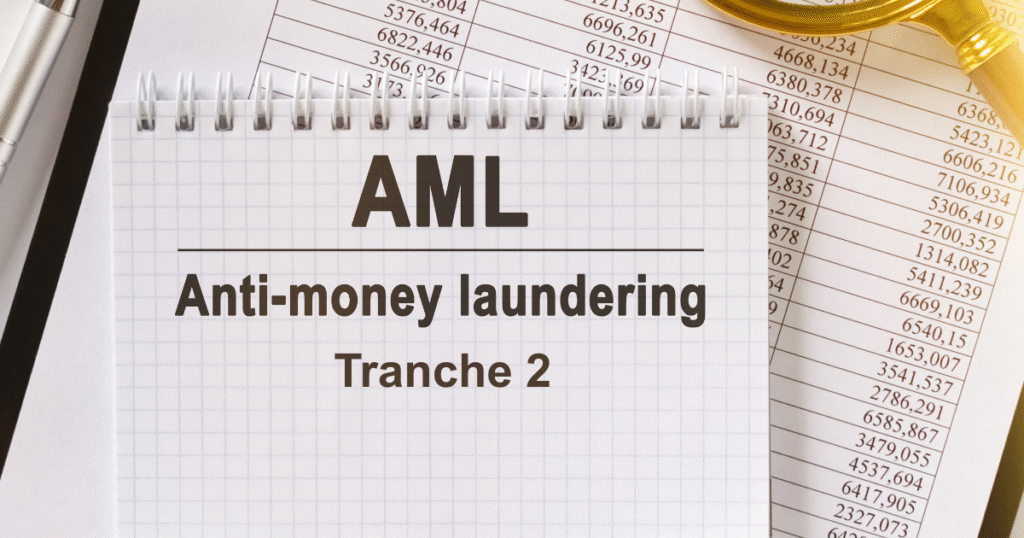Australia’s accountants are about to step into a new era of compliance with AML/CTF Tranche 2 for Accountants. With this rollout, the accounting profession will soon need to follow anti-money laundering and counter-terrorism financing (AML/CTF) laws similar to those already applied to banks and financial institutions.
If you are an accountant, bookkeeper, or accounting firm owner, this is the time to understand what is coming and how to prepare your practice for the changes ahead.
What Is AML/CTF Tranche 2?
AML/CTF Tranche 2 is the second phase of Australia’s anti-money laundering reforms. It expands existing laws to include new professions that handle client money or high-risk financial transactions.
For accountants, this means joining sectors like lawyers, real estate agents, and precious metal dealers under the AML/CTF regime.
The goal is simple: to close the gaps that criminals have used to move or hide illicit funds through professional services. Accountants, who often play a central role in setting up businesses, managing client funds, or advising on investments, are a natural focus of this reform.
If you want to understand the bigger picture, see our guide “What is AML/CTF Tranche 2?”
Why Are Accountants Now Included?
Accountants are often called the “financial gatekeepers” of the economy. You see your clients’ financial data, manage their accounts, and sometimes even move funds or structure their businesses.
Unfortunately, this trusted role can also be misused for money laundering, sometimes without the accountant even realising it.
For example:
- Setting up a company or trust that is later used to hide assets
- Managing client money or making payments from trust accounts
- Preparing complex transactions that disguise the true source of funds
These activities are perfectly legitimate in most cases, but without proper controls, they can also be exploited by criminals.
By bringing accountants under AML/CTF Tranche 2, the government aims to protect the profession, strengthen Australia’s financial system, and align with global standards set by the Financial Action Task Force (FATF).
Get Your Free Initial Consultation
Request a Free Consultation with one of our experienced AML Lawyers today.
When Do the New Rules Start?
Two key dates to remember for accountants and accounting firms:
- 31 March 2026: Enrolment opens with AUSTRAC (the Australian Government’s AML/CTF regulator).
- 1 July 2026: AML/CTF obligations officially begin.
By July 2026, all accounting firms that provide designated financial services must have AML compliance measures in place, including customer verification, reporting processes, and a written AML/CTF program.
Which Accounting Services Will Be Covered?
Not every accounting activity will be captured under Tranche 2. The new obligations apply to accountants who provide certain “designated services” that carry a higher risk of money laundering.
These typically include:
- Managing client money, trust accounts, or investments
- Buying, selling, or transferring assets on behalf of clients
- Setting up companies, trusts, or other business structures
- Providing financial or tax advice that involves moving or handling funds
In short, if you are handling client money or facilitating financial transactions, your firm will likely fall under the AML/CTF regime.
If you provide purely compliance-based tax or bookkeeping services, you may have limited obligations, but it is important to confirm where your services fit.
Key AML Obligations for Accountants
Here is what AML/CTF Tranche 2 will mean for accounting professionals.
1. Enrol with AUSTRAC
Before anything else, you will need to enrol your firm with AUSTRAC once enrolments open on 31 March 2026.
Enrolment ensures AUSTRAC recognises your firm as a reporting entity. It is a straightforward process but essential for compliance.
2. Conduct “Know Your Client” (KYC) Checks
Before providing a regulated service, you must verify your client’s identity and understand the nature of their business.
This is known as Customer Due Diligence (CDD) and includes:
- Verifying the client’s ID and beneficial owners
- Understanding the purpose of the transaction or service
- Assessing the client’s risk level (for example, is the client involved in a high-risk industry or operating offshore)
If a client seems suspicious or refuses to provide information, you will need to apply Enhanced Due Diligence (EDD) or even decline the engagement.
3. Monitor and Report Suspicious Activity
As an accountant, you will be expected to watch for unusual or suspicious behaviour and report it to AUSTRAC.
You must lodge a Suspicious Matter Report (SMR) if you suspect:
- A client is attempting to hide or move illegal funds
- Transactions do not make sense for the client’s profile
- The source of funds appears questionable
You may also need to submit Threshold Transaction Reports (TTRs) for any large cash transactions (over $10,000).
Your reporting helps law enforcement track and prevent financial crime.
4. Keep Detailed Records
Your firm must maintain records of:
- Client identification and verification documents
- Financial transactions and services provided
- Risk assessments and internal compliance activities
- Reports made to AUSTRAC
These records must be securely stored for at least seven years. Good record-keeping protects both your business and your clients.
Get Your Free Initial Consultation
Request a Free Consultation with one of our experienced AML Lawyers today.
5. Develop an AML/CTF Program
Every accounting firm will need a written AML/CTF Program.
This document outlines how your practice will identify, assess, and manage financial crime risks. It should cover:
- Risk assessment processes
- Procedures for KYC, reporting, and record-keeping
- Roles and responsibilities (including an AML Compliance Officer)
- Ongoing staff training and audits
Your program does not need to be complex, just practical and tailored to your business size and service model.
At AML House, we help firms design AML programs that are effective and easy to follow.
6. Train Your Team
Training is key to successful compliance. Everyone in your firm, from partners to junior accountants, should know:
- How to verify clients properly
- What red flags to look for
- When and how to report suspicious activity
Training ensures your firm stays compliant and reduces the risk of mistakes.
How Accountants Can Start Preparing Now
Even though the rules do not take effect until 2026, smart firms are already preparing.
Here is how to get ahead:
- Understand your exposure: Identify which services you offer will be regulated.
- Review your client onboarding process: Add ID checks and risk assessment questions.
- Draft a basic AML/CTF framework: Outline how your firm will meet KYC and reporting requirements.
- Stay updated: Follow AUSTRAC’s updates and industry guidance through 2025.
- Get professional support: AML specialists like AML House can help you set up your compliance program early.
Starting now will make July 2026 feel like business as usual, not a rush to catch up.
What This Means for the Accounting Profession
The introduction of AML/CTF Tranche 2 represents a major step forward for the accounting industry. It acknowledges the important role accountants play in maintaining trust and transparency across the financial system.
While it does bring new responsibilities, it also provides an opportunity for firms to strengthen their governance, demonstrate integrity, and build client confidence.
Ultimately, AML compliance is not just about meeting legal obligations. It is about protecting your firm and your clients from financial crime risks.
How AML House Can Help
At AML House, we specialise in helping Australian businesses and professionals navigate AML/CTF obligations.
For accountants, we provide:
- AML/CTF program templates tailored for accounting firms
- Practical compliance advice and ongoing support
- Staff training and awareness workshops
- Risk assessments and audit preparation
Our goal is to make compliance simple, practical, and effective so you can focus on helping your clients while staying compliant with AUSTRAC.
Ready to Get Started?
The countdown to AML/CTF Tranche 2 has begun.
Contact AML House today to find out how we can help your accounting firm prepare for these new obligations and turn compliance into a strength, not a burden.








